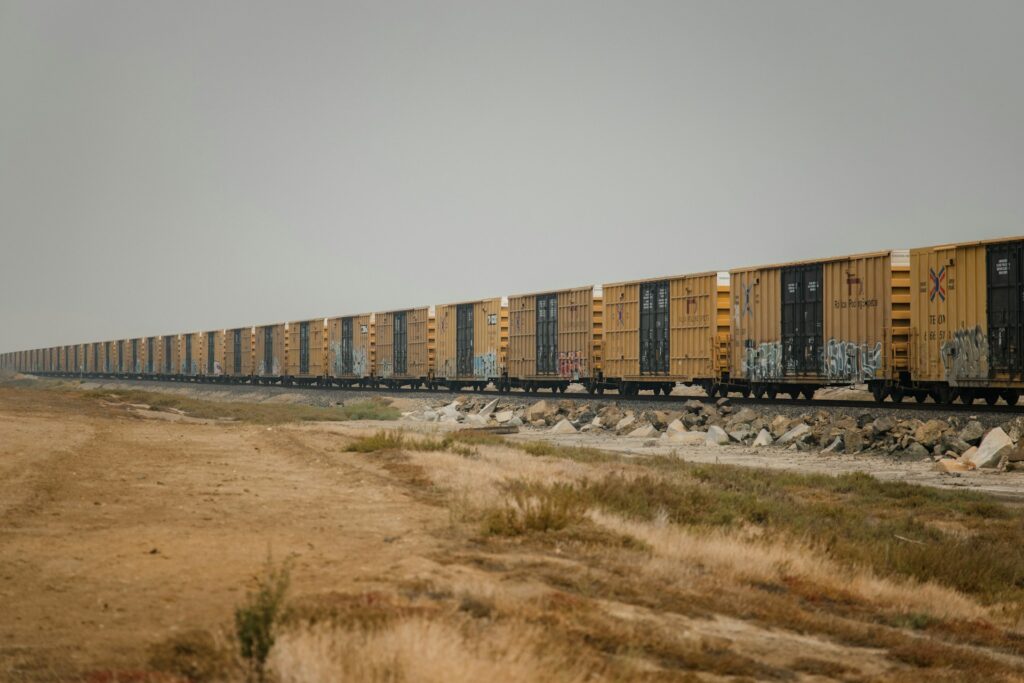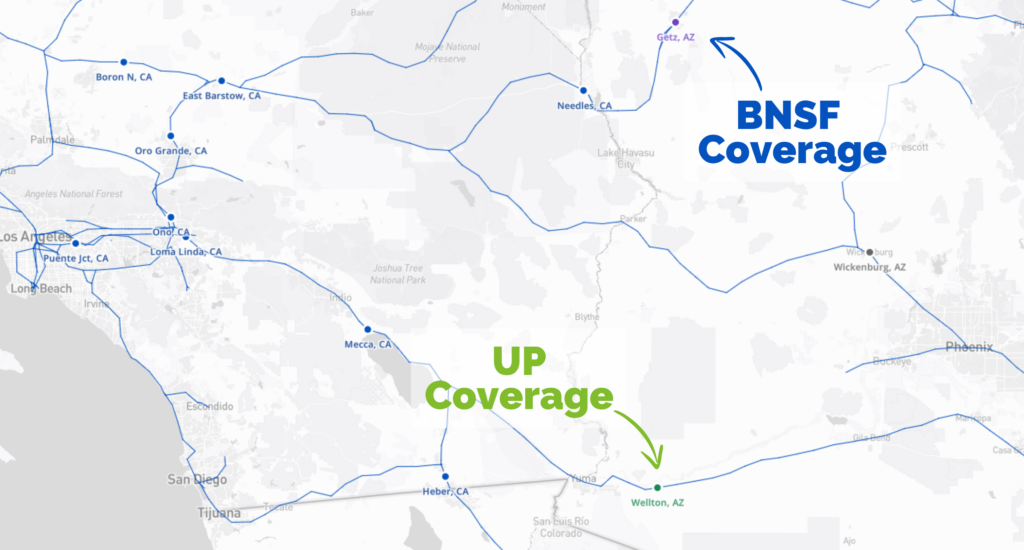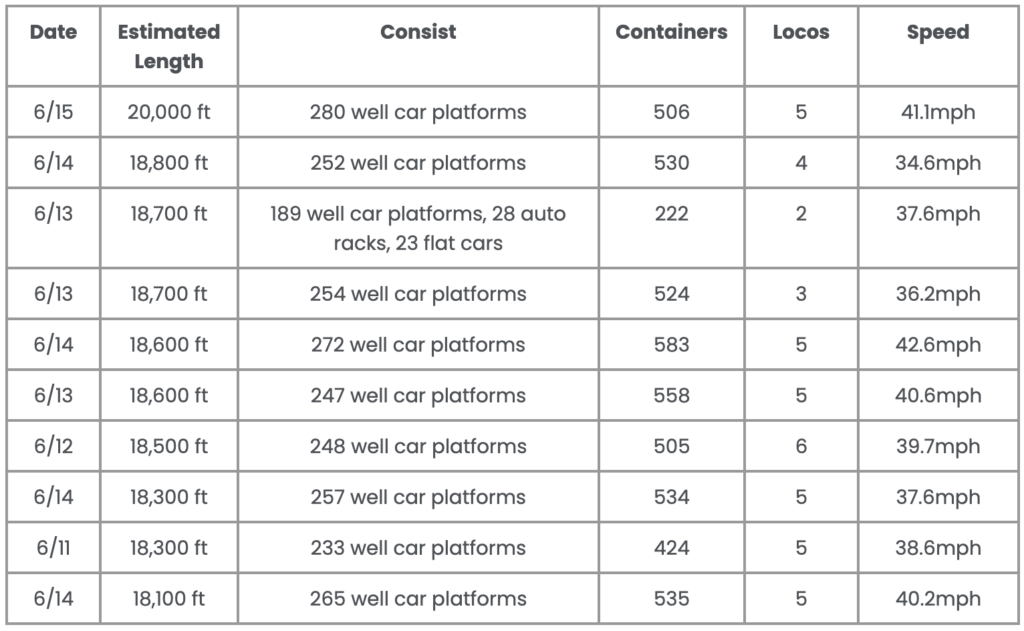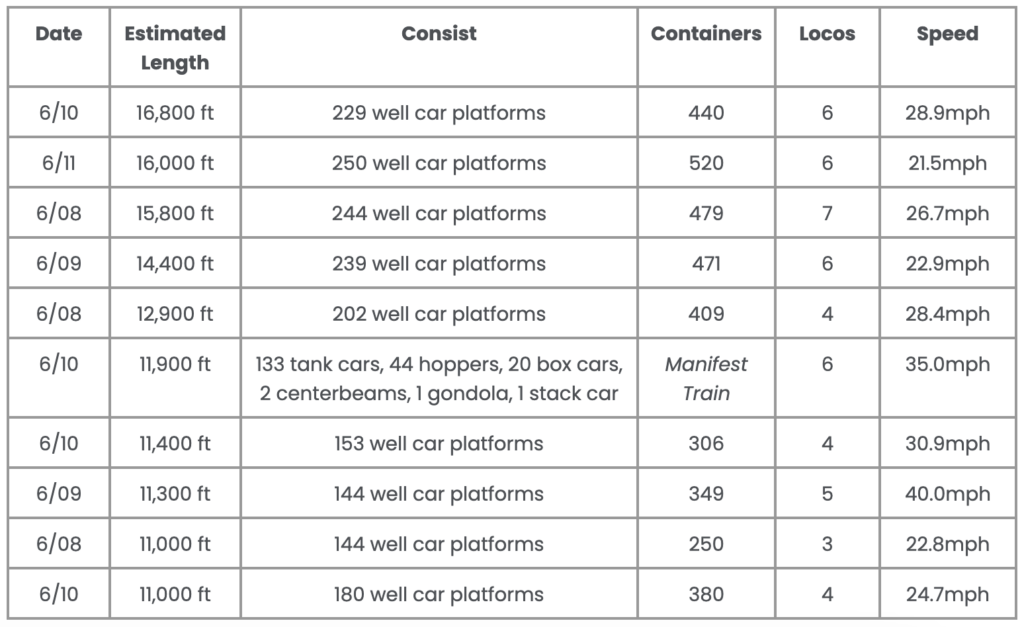Long Trains on the U.S. Rail Network: What’s Really Moving

Freight train length has been a growing topic of discussion, and concerns about the safety risks of running longer trains have captured the attention of policy makers and the public.
A new study on the derailment risks of longer trains has the train world again talking about train lengths.
The study, led by Peter Madsen, a professor at the Marriott School of Business at BYU, found a statistically significant relationship between longer trains and increased derailment risk, with 100-car trains having an 11% increased risk of derailment compared to 50-car trains, and 200-car trains having a 24% increased risk of derailment.
The research was not without its limitations. Madsen and team relied on data from the FRA Rail Equipment Accident (REA) and Highway-Rail Grade Crossing Accident (HRGCA) databases, which only includes information on trains involved in accidents.
The authors make clear: “data on the lengths of trains that are not involved in accidents are largely unavailable.”
RailState was created to change that.
We believe that better data on all train movements will provide policy makers and researchers with better tools to evaluate risks and make more informed decisions to ensure a safe and efficient freight rail system.
RailState Coverage
RailState collects data on train movements through a network of proprietary sensors that capture images of trains and compile detailed information about each train, including train type, speed, the train consist (including car numbers), HAZMAT information, and train length.
Our network coverage includes all of Canada, where the country’s transportation regulator, Transport Canada, has access to nationwide data on train movements through RailState.
In the U.S., our network currently covers UP and BNSF across Southern California, Arizona, New Mexico, and Texas. Long trains are common in this region and we share some recent train examples.

Long Trains on Union Pacific
RailState has a number of sensors covering UP’s routes in the US Southwest with one sensor located near Wellton, AZ, on the Gila subdivision in western Arizona. This route averages 14 trains per day in each direction, the train volume is 61% intermodal, 26% manifest, 6% automotive trains, and the remainder is a mix of grain unit and passenger trains.
The longest trains run in the U.S. are intermodal trains, and in the southwest, Union Pacific runs very long intermodal trains, with many carrying more than 200 wells or platforms.
These are some of the longest trains seen in the past 10 days:

The longest non-intermodal train was a manifest train that passed Wellton, AZ on June 9.
This manifest train contained 223 cars, 5 locomotives, and was approximately 14,000-feet long. There were 34 tank cars with a broad mix of materials, including cars with HAZMAT placards displaying UN Numbers for crude oil, hazardous waste, hydrochloric acid, diesel fuel, liquid propane gas, toluene, methyl methacrylate, elevated temperature liquids, corrosive liquids, xylenes, methanol, chlorine, and carbon bisulfide.
Over the past 10 days, RailState has identified 23 manifest trains carrying 150 or more cars traveling on UP through this region.
The other Class I operating in the US Southwest, BNSF, tends to run shorter trains than UP but many are longer than 2 miles.
Long Trains on BNSF
One of RailState’s sensors on BNSF is located near Getz, AZ, on the Seligman subdivision. This route sees an average of 31 trains per day in each direction. The train volume is 70% intermodal, 15% manifest, 5% automotive trains, and the remainder is a mix of grain unit, tank car unit, and passenger trains.
These are some of longest trains seen over the past 10 days:

The long manifest train seen on June 10 with 201 total cars carried a large number of tank cars, including 47 tanks cars displaying UN1987, likely ethanol. Other hazardous material placards displayed on tanks cars on this train included elevated temperature liquids, liquid propane gas, combustible liquids, and potassium hydroxide.
Better Data = Better Policy
These are just some examples of real trains moving across the U.S. rail network every day. Long trains are increasingly common and if policy makers want to get serious about understanding the risks, they need to get serious about having real data on what kinds of trains are moving. The data is now available and it’s up to policy makers to put it to use to promote a safe and efficient rail system.
To learn more about long trains moving on the U.S. network and how rail network data can help improve policy-making, schedule a demo today.
